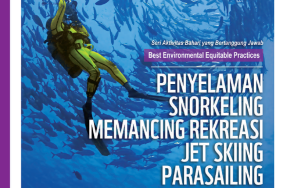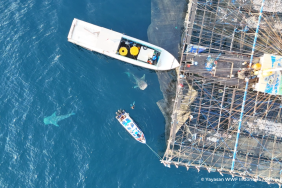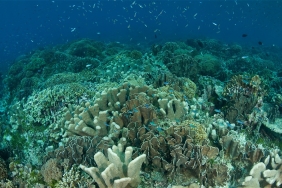WORLD TOURISM DAY REFLECTION (2): RECOGNIZE, VISIT, MONITOR - THE KEY TO SUSTAINABLE TOURISM
By: Indarwati Aminuddin (National Coordinator for Responsible Marine Tourism, WWF-Indonesia)
Indonesia's protected area, based on Presidential regulation No. 32 of 1990, is an area designated with the main function of protecting the preservation of the environment which includes natural resources, artificial resources, and the values and culture of the nation, in the interests of sustainable development.
Broadly speaking, areas with extraordinary magnetism experience different fates in the context of protection. First, there are areas that have been protected by regulations, but are still exploited very intensely.
Second, there are also areas that are declared to be protected because of certain sites in them. Thus, a number of practitioners and observers need to intervene to protect it. Thirdly, some areas are declared to be protected to save these areas as soon as possible from greater pressure from certain industries.
Nusa Penida Marine Protected Area, Komodo National Park, Wakatobi National Park, and Bunaken National Park; are icons of marine tourism that are between these pressures. Protected, loved, yet at some times neglected due to tourism pressures in certain zones.
Komodo National Park is a clear example of an area that has the force of law, but is intensely exploited. This can result in a decline in ecological value and biodiversity. The impact is not only on the weakened tourism business, but also on fishermen who have to go further out to sea to catch fish.
"Our natural resources are very vulnerable to various pressures," said Ranny R Yuneni, Sharks and Rays Officer, WWF-Indonesia.
"For example, if West Manggarai continues to lose immature black tip and white tip shark pups (size between 48-50 cm) in massive numbers, it will not only mean a disruption of the ecosystem chain, but also a decline in the economic value of tourism. In fact, sharks have become a special attraction for divers here," he explained.
Such is the case with the Nusa Penida marine conservation area, Bali, which has a diversity of at least 296 species of corals and 576 species of fish. Tourists come in waves to enjoy the natural and underwater beauty of Nusa Penida.
Unfortunately, monitoring by the Coral Triangle Center in July 2017 found severe damage to coral reefs due to tourist activities. Starting from anchor marks destroying corals, traces of trampling, to a stretch of broken coral in the former pontoon area and underwater walking location arena.
This situation has occurred in years past. Since the 1960s, access to tourism that cuts through mountains, cuts through sea lanes, breaks through remote locations, shows one important fact. That economic and consumer dominance has had a long-lasting damaging impact on surrounding resources.
All parties are then called upon to reconcile economic development with ecological security. Preserve, or lose everything?
The answer, obviously, is keep it. WWF-Indonesia invites you to recognize, visit and monitor marine protected areas in Indonesia using the Marine Buddies application. By downloading Marine Buddies on Playstore/iOS, you can contribute directly by assessing the condition of the area, monitoring the management of marine protected areas, and reporting irresponsible marine activities.





